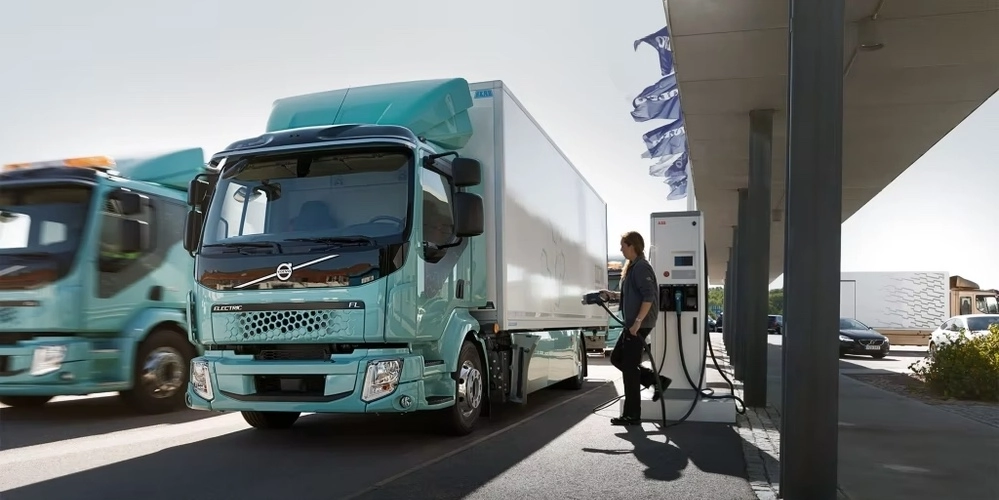The arrival of the Megawatt Charging System (MCS) is imminent, and according to industry announcements, it will soon be available for electric vehicle charging, especially trucks.
At the same time, the number of charging points is constantly increasing nationwide, currently surpassing 30,000, and will continue to grow in the coming years to comply with the European Alternative Fuels Infrastructure Regulation (AFIR).

However, concerns arise over the lack of power in some locations and the outdated nature of the electrical network.
So, who should bear the costs of its expansion and modernisation?
During the European Electric Mobility Congress (CEVE), Ana Fernández, Product Manager for eBus & eTruck at Iberdrola, asserts: “The distributors would have to bear part of these costs.”
“In the end, the operator is responsible for bearing the costs of adapting the network so that the rest of the warehouses or companies located in this area of action can then use it,” she explains.
In this regard, Spain plans to allocate 50 per cent of the 1.4 billion euros to strengthen and expand the electrical network, while the other half will go to the local installation of charging points, according to Business Association for the Development and Promotion of Electric Mobility (AEDIVE).
The goal is to make the electrical system more flexible and capable of anticipating and adapting to new needs, which will be crucial for addressing the ecological transition process and meeting the climate and energy objectives set for 2030.
As well as advancing in the digitalization and automation of the electrical network.
Despite this, Fernández points out that “more than 95 per cent of urban routes in Spain can already be carried out with electric vehicles.”
This is not only due to the availability of public charging points but also because, on occasions, the routes and autonomy allow for a single overnight recharge at the operators’ depots.
“It’s a technology that is already mature,” she affirms.
Although she emphasizes that currently the electrical network “is not prepared to tackle high-power projects,” such as the MCS.
Therefore, “the distributors are asking the government to allow them to invest more money” to adapt and carry out these expansion projects, in order to provide the necessary power at the points that require it.

Juan Carlos León, Electromobility Sales Manager at Volvo, agrees with the Iberdrola representative, but adds: “I consider that ‘the party’ should be paid for by everyone.”
“You have to pay a little more so that your supermarket can transport goods sustainably,” he details.
One way or another, it is necessary to improve the network, as currently, many locations lack the necessary power to install chargers where operators wish to do so.
According to AEDIVE, by 2030, the AFIR objectives require electrifying 10 per cent of the most frequented truck stop locations, which translates to 365 stations and around 7,000 charging points (700 MCS and 6,300 CCS).
Meeting this regulation involves adapting the electrical network to meet the power demands associated with the energy transition.
As well as publishing a map of the network’s power so that CPOs and other sector actors are aware of the energy at each location and speculation about its availability is avoided.
The lack of this currently leads to operators being unable to securely plan projects and investments for installation in certain locations, as they must wait for energy companies to inform them whether the requested power is available or not.
If it is not, they often have to restart the process from scratch.
Another issue that may arise is managing the network’s capacity, an issue that is becoming critical in many nations, such as the Netherlands.
What possible solutions exist to address this?
To prevent electric vehicles from posing a “threat” to the electrical network, the concept of Smart Charging is presented as an efficient, safe, and environmentally friendly solution.
In this context, technological centres and various companies are developing sustainable mobility laboratories that allow managing, validating, and visualizing various Smart Charging strategies.
Specifically, this technology is a system capable of determining when, how, and in what way it is most cost-effective for the user to charge their electric carz.
This allows minimizing the total cost of recharging and optimizing the system, both from the perspective of electrical consumption and that of the users.
This model makes it possible to carry out vehicle charging in a programmed manner and incorporate the necessary intelligence to adapt it to network constraints.








